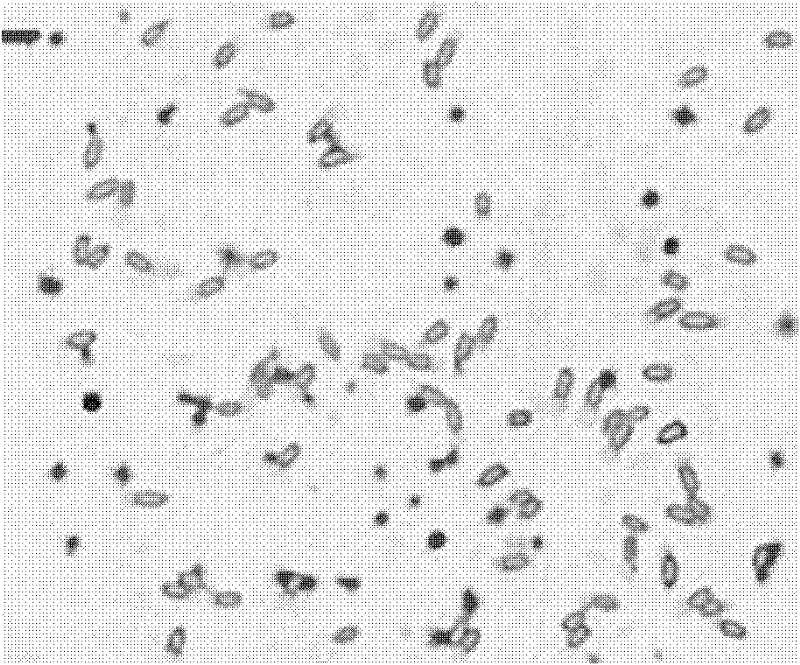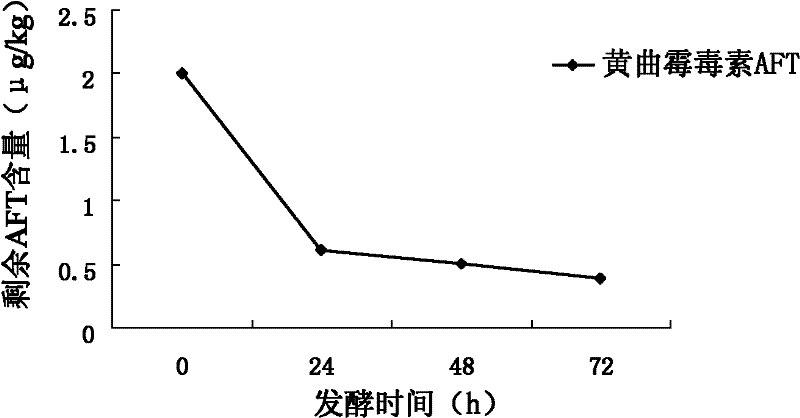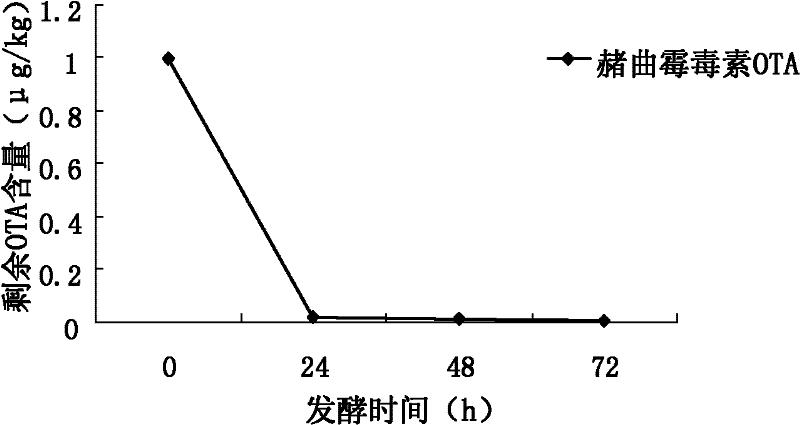Bacillus amyloliquefaciens and application thereof
A technology of amylolytic spores and bacilli, which is applied in the fields of application, bacteria, and food preservation, and can solve problems such as polluting the environment, affecting food safety, and destroying nutrition
- Summary
- Abstract
- Description
- Claims
- Application Information
AI Technical Summary
Problems solved by technology
Method used
Image
Examples
Embodiment 1
[0018] Example 1 Acquisition and identification of Bacillus amyloliquefaciens ASAG1
[0019] 1. Acquisition and identification of Bacillus amyloliquefaciens ASAG1
[0020] The bacillus amyloliquefaciens described in the present invention is isolated from grain stored corn. The morphology of the bacterial strain is as follows: Gram-positive bacteria, rod-shaped cell, spore-forming, catalase and oxidase reactions are positive. Acid production test using carbohydrates: starch hydrolysis, hydrolyzed casein and hydrolyzed gelatin were all positive. Optimal medium formula: potato 200 g / L, glucose 20 g / L, agar 20 g / L, agar 15 g, natural pH. The culture temperature is 28~32℃.
[0021] The 16S rDNA sequence of the ASAG1 strain of the present invention is shown in SEQ ID No: 1 in the sequence table.
[0022] 2. Preservation of Bacillus amyloliquefaciens ASAG1
[0023] Through the above identification results, it was confirmed that the strain ASAG1 was Bacillus amyloliquefaciens ( ...
Embodiment 2
[0024] Example 2 The cultivation of Bacillus amyloliquefaciens ASAG1
[0025] (1) Incline culture: culture time 2~3 days, medium composition (1 liter): potato 200 g / L, glucose 20 g / L, agar 20 g / L, agar 15 g, natural pH, culture temperature 28~ 32°C.
[0026] (2) Seed culture: Pick activated single colonies from the slope in the ultra-clean workbench and insert them into the seed culture solution, shake the bacteria at 28°C for 1-2 days at a speed of 200 r / min to obtain the seed solution;
[0027] Seed culture medium composition (1 liter): glucose 20g / L, beef extract 5g / L, magnesium sulfate heptahydrate 1g / L, ammonium sulfate 1g / L, calcium carbonate 3g / L, potassium dihydrogen phosphate 0.6g / L, potato 200g / L, pH 7.0~7.2.
[0028] (3) Fermentation: Add the seed liquid obtained in the above step into the fermentation medium according to the inoculum amount of 5%, and culture it under shaking at 28°C for 2-3 days at a rotation speed of 200 r / min to obtain the fermentation liquid ...
Embodiment 3
[0029] Example 3 Antagonistic experiment of Bacillus amyloliquefaciens ASAG1 on fungi
[0030] The fermentation broth of Bacillus amyloliquefaciens ASAG1 prepared in Example 2 was centrifuged at 12000 r / min for 10 min, and the supernatant was filtered and sterilized by a 0.2 μm sterile microporous membrane, and the inhibition test was carried out by using the Oxford cup quantitative method to measure the pH. The diameter of the bacterial circle was used to determine the antibacterial effect of the strain on 12 common stored grain harmful fungi.
[0031] Among them, Aspergillus niger, Aspergillus flavus, Aspergillus fumigatus, Aspergillus carbon black, Penicillium verruca, Penicillium chrysogenum, and Penicillium chrysogenum were cultured using Cha's medium, and Fusarium tritina, Fusarium seminakedum, and Fusarium oxysporum were cultivated using PDA Base, Aspergillus aeruginosa uses high-salt Chapei medium, and Aspergillus uses concentrated sugar Chapei medium for bacteriostati...
PUM
 Login to View More
Login to View More Abstract
Description
Claims
Application Information
 Login to View More
Login to View More - R&D
- Intellectual Property
- Life Sciences
- Materials
- Tech Scout
- Unparalleled Data Quality
- Higher Quality Content
- 60% Fewer Hallucinations
Browse by: Latest US Patents, China's latest patents, Technical Efficacy Thesaurus, Application Domain, Technology Topic, Popular Technical Reports.
© 2025 PatSnap. All rights reserved.Legal|Privacy policy|Modern Slavery Act Transparency Statement|Sitemap|About US| Contact US: help@patsnap.com



